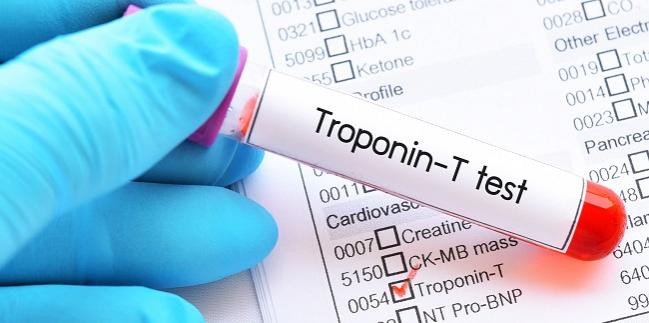High-Sensitivity Troponin Performs Well Against Traditional Tools for 30-Day MACE Prediction
Used in the emergency department for suspected acute MI, an “extended algorithm” may be warranted in certain scenarios.

Using clinical assessment and an ECG on top of a high-sensitivity cardiac troponin test may add little in the way of prognostic benefit as compared with the assay alone, at least for predicting 30-day MACE in patients who present to the emergency department (ED) with chest pain suggestive of acute MI, new findings show
Of note, the extended algorithm is more effective at ruling out the combination of 30-day MACE and unstable angina, according to a prospective study seeking to understand the best combination of traditional approaches and the newer, highly sensitive assays in this high-risk group.
This latest report from the ongoing Advantageous Predictors of Acute Coronary Syndrome Evaluation (APACE) appears in the August 20, 2019, issue of the Journal of the American College of Cardiology. APACE tracks the health outcomes of patients from 12 health centers in five European countries, in an effort to improve the early diagnosis of acute MI.
“The most important finding from our study is that the troponin algorithm alone is a valuable tool to predict short-term MACE with very high safety and efficacy,” Thomas Nestelberger, MD (Cardiovascular Research Institute Basel, Switzerland), observed in an email to TCTMD. Nestelberger shared first authorship with Jasper Boeddinghaus, MD (Cardiovascular Research Institute Basel).
Troponin-Only vs Extended-Algorithm Strategy
The study, which enrolled patients between April 2006 and August 2015, included 3,123 adults who presented to an ED with suspected acute MI within 12 hours prior to admission. High-sensitivity troponin assays were performed in all patients, both at the time of ED admission (0 h) and an hour later (1 h), using European Society of Cardiology algorithm. For the test-only strategy, acute MI was diagnosed on the basis of at least 1 high-sensitivity cardiac troponin T value above the 99th percentile, together with a significant rise and/or fall in values.
Use of the high-sensitivity assays ruled out acute MI for 60% of patients, as compared with 45% of patients when the extended algorithm was used (P < 0.001). At 30-day follow-up, however, 524 patients (17%) had experienced MACE, defined as all-cause death, cardiac arrest, acute MI, cardiogenic shock, sustained ventricular arrhythmia, and high-grade atrioventricular block, with no differences between the assay-only and extended-algorithm groups (0.6% and 0.4%, respectively; P = 0.429); this resulted in a similar negative predictive value for both tests. The high-sensitivity troponin test ruled in fewer patients (16% vs 26%), however, with a higher positive predictive value (76.6% vs 59%; both P < 0.001).
Adding unstable angina to the mix changed the prognostics. Overall, 806 patients (26%) experienced MACE or unstable angina by 30 days. Here, the negative predictive value for the high-sensitivity assays (91.7%) was less robust than for the extended algorithm (95.3%) as a rule-out test.
“The [troponin-only] algorithm better balanced efficacy and safety in the prediction of MACE,” the authors conclude, “whereas the extended algorithm is the preferred option for the rule-out of 30-day MACE plus unstable angina.”
The troponin algorithm alone is a valuable tool to predict short-term MACE with very high safety and efficacy. Thomas Nestelberger
In an editorial, Germán Cediel, MD, PhD (Hospital Universitari Germans Trias i Pujol, Badalona, Spain), and colleagues say this study “reinforces the accuracy of high-sensitivity cardiac troponin 0/1 hour algorithms to predict AMI and 30-day AMI-related events. However, a thorough assessment of patient’s history and ECG findings continues to be essential, not only to help differentiate between AMI and other causes of [troponin] elevation but also to identify patients with unstable angina.”
The editorialists also argue that the accuracy of the high-sensitivity troponin assay would be lower in a larger, unselected group of patients. “Not all patients of whom physicians in the emergency department suspect an ACS are presenting with chest pain,” Cediel noted to TCTMD. “In these patients it is a challenge to show [that] these algorithms, the short and extended algorithms, can predict outcomes in similar ways.”
Nestelberger concurred with the idea that ED patients with suspected acute MI are a unique group. “Further studies are necessary to quantify the utility of both algorithms in patients with a lower or higher pretest probability (eg, patients presenting to an outpatient clinic or patients directly transferred to the cath lab or intensive care unit),” he told TCTMD via email. The ideal strategy, he stated, would be a prospective evaluation of both algorithms in a randomized controlled trial.
Marcus A. Banks is the 2019 recipient of the Jason Kahn Fellowship in Medical Journalism. He is currently a master’s…
Read Full BioSources
Nestelberger T, Boeddinghaus J, Wussler D, et. al. Predicting major adverse events in patients with acute myocardial infarction. J Am Coll Cardiol. 2019;74:842-854.
Cediel G, Bardají A, Barrabés JA. Ruling out acute coronary syndromes: Troponin is essential, as is clinical assessment. J Am Coll Cardiol. 2019;74:855-857.
Disclosures
- Nestelberger reports speaker honoraria from Beckman Coulter.
- Cediel reports no relevant conflicts of interest.


Comments